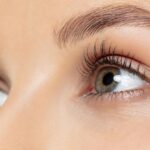
A key element in this process is the choice of grass, which sets the foundation for the entire landscape. While natural grass has been the traditional choice, the rise of artificial grass has brought forth a plethora of options that cater to diverse landscaping needs. In this comprehensive exploration, we delve into the various qualities of artificial grass that make it an increasingly popular and versatile choice for landscaping.
Durability: A Foundation for Long-Lasting Beauty
One of the most notable qualities of artificial grass for landscaping is its exceptional durability. Unlike natural grass, which can be susceptible to wear and tear, artificial grass is engineered to withstand heavy foot traffic, weather fluctuations, and various environmental conditions. High-quality synthetic fibers, often made from materials like polyethylene or polypropylene, contribute to the robustness of artificial grass, ensuring it maintains its lush appearance year-round.
Realistic Aesthetics: Mimicking Nature with Precision
Advancements in technology have enabled the creation of artificial grass that closely resembles the texture and color of natural grass. Realistic aesthetics are a pivotal quality, as they allow artificial grass to seamlessly blend into the surrounding environment, creating a natural and inviting landscape. Innovations in yarn design and manufacturing processes have made it possible to achieve a lifelike look, with variations in blade shapes, colors, and textures that mimic the nuances found in natural grass.
UV Resistance: Sustaining Vibrant Greenery
Artificial grass undergoes constant exposure to sunlight, and prolonged exposure can cause color fading. UV stabilization technology prevents the degradation of grass fibers due to sunlight, making it an ideal choice for landscapes that receive ample sunlight throughout the year.
Water Conservation: Eco-Friendly Landscaping
One of the eco-friendly qualities of artificial grass is its contribution to water conservation. Natural grass requires substantial watering to maintain its lush appearance, especially in arid climates. This water-saving aspect makes synthetic turf an environmentally conscious choice, aligning with the growing emphasis on sustainable landscaping practices.
Low Maintenance: Effortless Beauty All Year Round
Once installed, it retains its immaculate appearance without the need for constant upkeep. Simple practices such as occasional brushing to maintain the fibers’ upright position and removing debris are usually sufficient to keep artificial grass looking pristine. This quality appeals to homeowners and businesses seeking a lush landscape without the time-consuming tasks associated with natural grass maintenance.
Versatility in Application: Tailoring Landscapes to Diverse Needs
Artificial grass is incredibly versatile, allowing for a wide range of applications in landscaping. It can be used to create lawns, play areas, rooftop gardens, pet-friendly spaces, and even sports fields. The adaptability of artificial grass makes it a valuable asset for landscape architects and homeowners alike, providing the flexibility to design outdoor spaces that cater to specific needs and preferences.
Drainage Systems: Keeping Landscapes Pristine
Effective drainage is a crucial quality in landscaping, preventing waterlogging and maintaining a clean and safe outdoor environment. Quality artificial grass is equipped with advanced drainage systems that efficiently channel water through the backing, preventing the accumulation of water on the surface. This feature is particularly important in areas with heavy rainfall, ensuring that the artificial grass remains dry and usable even after a downpour.
Soft and Safe: Ideal for Play Areas and Pet-Friendly Spaces
Artificial grass is designed with safety and comfort in mind, making it an ideal choice for play areas and spaces frequented by pets. The soft and cushioned texture of the synthetic fibers provides a comfortable surface for children to play on, reducing the risk of injuries. Additionally, artificial grass is pet-friendly, resistant to stains, and easy to clean, making it a practical choice for households with furry friends.
Customization Options: Tailoring Aesthetics to Personal Taste
Artificial grass comes in a variety of styles, lengths, and colors, providing ample opportunities for customization. Homeowners and landscapers can choose the type of artificial grass that best complements the overall design and aesthetic of the outdoor space. Whether aiming for a manicured lawn or a more relaxed, natural look, the diverse customization options ensure that artificial grass can be tailored to suit individual preferences.
Cost-Effective Long-Term Solution: Investing in Lasting Beauty
While the initial cost of installing artificial grass may be higher than natural grass, it proves to be a cost-effective long-term solution. The reduced need for water, fertilizers, pesticides, and ongoing maintenance translates to significant savings over the years. Additionally, the durability of high-quality artificial grass ensures that it retains its aesthetic appeal for an extended period, offering a lasting return on investment.
conclusion
The qualities of artificial grass make it a compelling choice for landscaping projects. From its durability and realistic aesthetics to water conservation and low maintenance, synthetic turf addresses a myriad of challenges associated with natural grass. The versatility and customization options further enhance its appeal, allowing for the creation of beautiful and functional outdoor spaces tailored to individual preferences. As the landscaping industry continues to evolve, artificial grass stands out as a sustainable and aesthetically pleasing alternative that transforms outdoor environments into lush and inviting landscapes.





